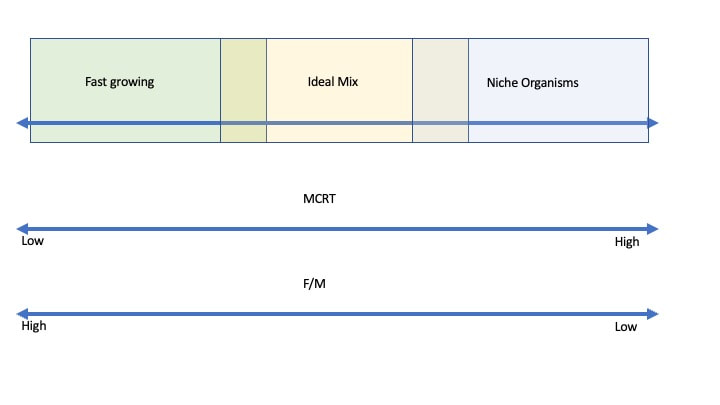Two General Strategists
- r-strategists - which are faster growing organisms
- Log phase in WWTP
- Seen in high F/M
- Changing influent concentrations or makeup
- Lag & Log phase growth biomass
- K-strategists - are the slower growing organisms vital for treatment
- Tend to be slower growing
- Exploit a niche
- Substrates for growth
- pH extremes
- Temperatures extremes
If you have read this site before, you know that I always like to relate microbial populations and biological treatment unit performance to your location on the Microbial Growth Curve. This gives us a convenient visualization to help explain they why bacteria are behaving as they do.
- During startup or near a lagoon influent you have a “bloom” of favoring fast growing organisms that thrive in high F/M environments. This tends to be your r-strategist microbes.
- As the easily used soluble biodegradable organics (BOD5) decreases, you see overall growth rates slow and organisms that exploit niche substrates emerge. This is where we use the terms "mature biomass", "steady-state", and "decline phase growth". At this point log growth stops and you have low F/M.
- Fast growing in WW
- Many common genera – well known since the also grow fast in the lab!
- Doubling rate is usually in the hours for WWTP
- Niche organisms
- AOB & NOB - nitrifiers
- Phosphate Accumulating Organisms (PAO)
- Sulfur Oxidizing
- Nocardia forms (foaming bacteria)
- Some filamentous bacteria (low F/M)
- Environments promoting niche organisms
- Longer sludge age – must be long enough to avoid wash out
- Presence of substrate at levels promoting their growth
- Environmental factors that favor their growth - examples include organic acids, low D.O., high temperature, low N or P, etc.
- F/M conditions that favor development of these niche organisms. In the case of nitrifiers, the rule of thumb is 80% of COD must be removed before you start to see substantial growth in the MLSS.



 RSS Feed
RSS Feed